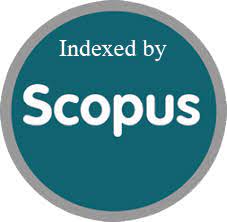Unlocking the Future: Palm Recognition with Convolutional Neural Networks(CNN)
DOI:
https://doi.org/10.63682/jns.v14i15S.3863Keywords:
Palm Recognition, Convolutional Neural Networks (CNN), Biometrics, Deep Learning, Image Classification, Human-Computer InteractionAbstract
Palm recognition, a subset of biometrics, has received a lot of attention due of its potential utility in many different domains, including security systems and human-computer interface. In this study, convolutional neural networks (CNNs) are being utilised to investigate the development of a palm detection system. Deep learning will be used to detect and categorise palm orientation in digital photographs. Data collection, which entails gathering a broad dataset of precisely labelled palm pictures for supervised learning, is an important component of the project. We manage data preprocessing and prepare datasets for model training by employing techniques such as picture scaling, pixel normalisation, and data augmentation. Our technology is built around a CNN model architecture, which generates a neural network capable of automatically collecting information from palm images and conducting smart classification. This design employs convolutional layers for feature extraction and fully linked layers for classification. During the training phase, we investigate the technique, optimizer selection, loss function selection, and hyperparameter optimisation. We pay close attention to two things: monitoring the model's performance on the validation set and putting countermeasures in place to avoid overfitting. The evaluation section provides information about the model's precision and generalizability. We review the results of testing on the validation and test datasets while keeping the problems and limits in mind. Our efforts to fine-tune the model involve adjusting hyperparameters and researching data augmentation approaches, all with the goal of improving model performance. During the inference phase, the trained model's potential in real-world situations is highlighted, demonstrating how it might be applied in practise. Our palm recognition technique paves the path for future biometric authentication use, with potential applications in security, access management, and human-computer interface.
Downloads
Metrics
References
Anil, R., Dai, A. M., Firat, O., Johnson, M., Lepikhin, D., Passos, A., ... & Wu, Y. (2023).
Palm 2 technical report. arXiv preprint arXiv:2305.10403.
Brown, D., & Bradshaw, K. (2019, November). Improved palmprint segmentation for robust identification and verification. In 2019 15th International Conference on Signal-Image Technology & Internet-Based Systems (SITIS) (pp. 1-7). IEEE.
Cho, S., Oh, B. S., Toh, K. A., & Lin, Z. (2019). Extraction and cross-matching of palm-vein and palmprint from the RGB and the NIR spectrums for identity verification. IEEE Access, 8, 4005-4021.
Genovese, A., Piuri, V., Plataniotis, K. N., & Scotti, F. (2019). PalmNet: Gabor-PCA convolutional networks for touchless palmprint recognition. IEEE Transactions on Information Forensics and Security, 14(12), 3160-3174.
Fei, L., Lu, G., Jia, W., Teng, S., & Zhang, D. (2018). Feature extraction methods for palmprint recognition: A survey and evaluation. IEEE Transactions on Systems, Man, and Cybernetics: Systems, 49(2), 346-363.
Palma, D., Montessoro, P. L., Giordano, G., & Blanchini, F. (2017). Biometric palmprint verification: A dynamical system approach. IEEE Transactions on Systems, Man, and Cybernetics: Systems, 49(12), 2676-2687.
Poonia, P., & Ajmera, P. K. (2022). Upgrading information security and protection for palm- print templates. Wireless Personal Communications, 126(2), 1535-1551.
Xu, Y., Fei, L., & Zhang, D. (2014). Combining left and right palmprint images for more accurate personal identification. IEEE transactions on image processing, 24(2), 549- 559.
Zhang, D., Kanhangad, V., Luo, N., & Kumar, A. (2010). Robust palmprint verification using 2D and 3D features. Pattern Recognition, 43(1), 358-368.
Downloads
Published
How to Cite
Issue
Section
License

This work is licensed under a Creative Commons Attribution 4.0 International License.
You are free to:
- Share — copy and redistribute the material in any medium or format
- Adapt — remix, transform, and build upon the material for any purpose, even commercially.
Terms:
- Attribution — You must give appropriate credit, provide a link to the license, and indicate if changes were made. You may do so in any reasonable manner, but not in any way that suggests the licensor endorses you or your use.
- No additional restrictions — You may not apply legal terms or technological measures that legally restrict others from doing anything the license permits.










